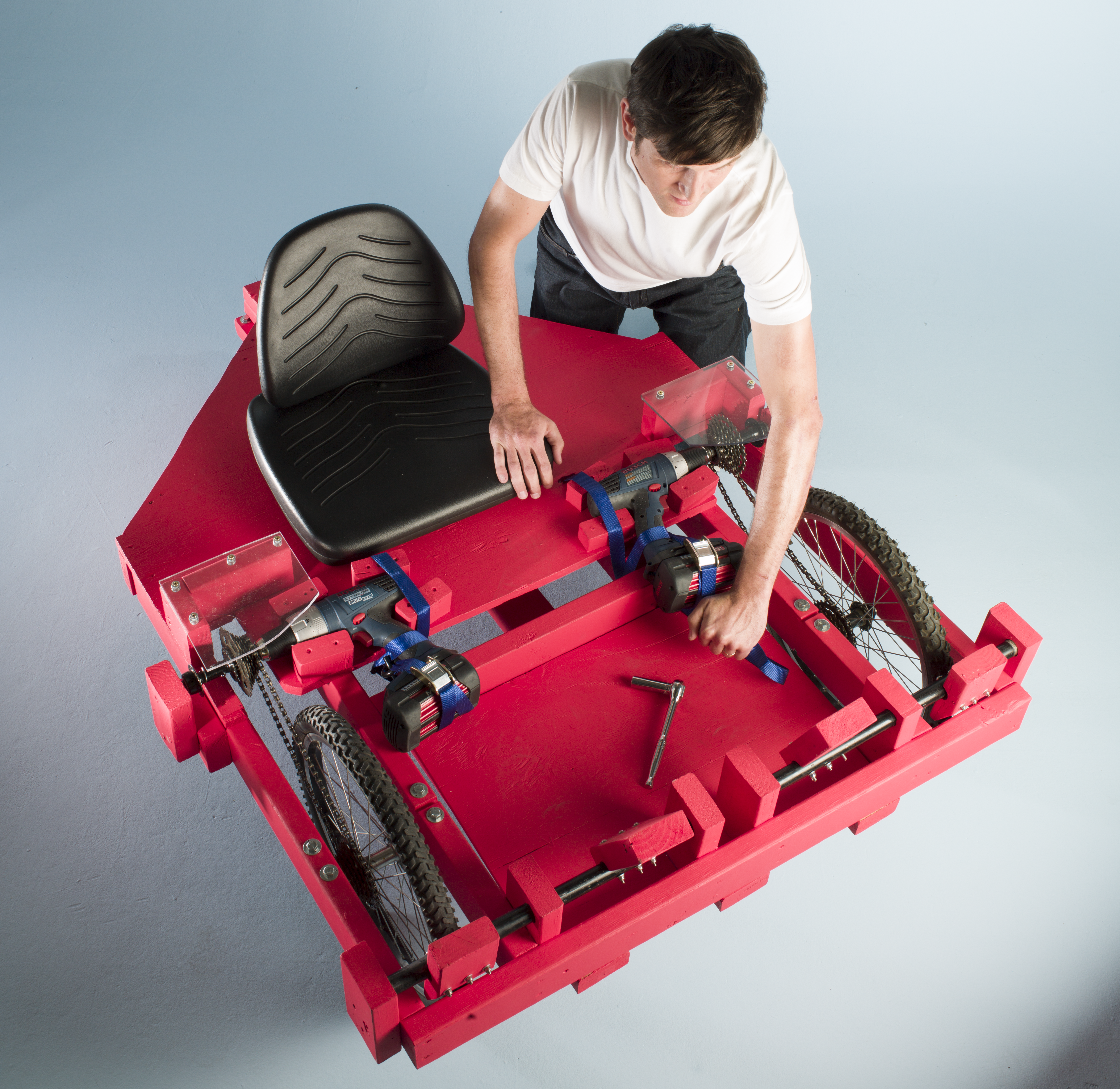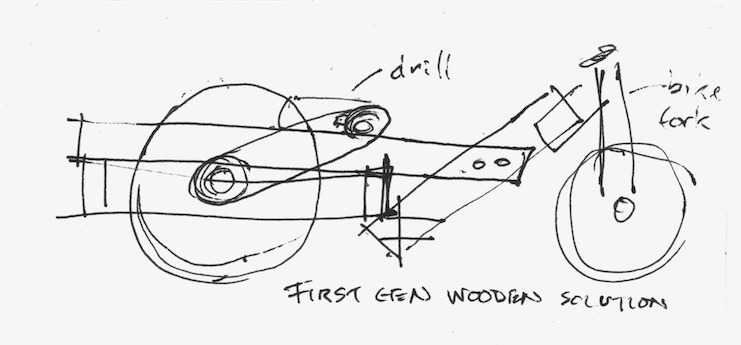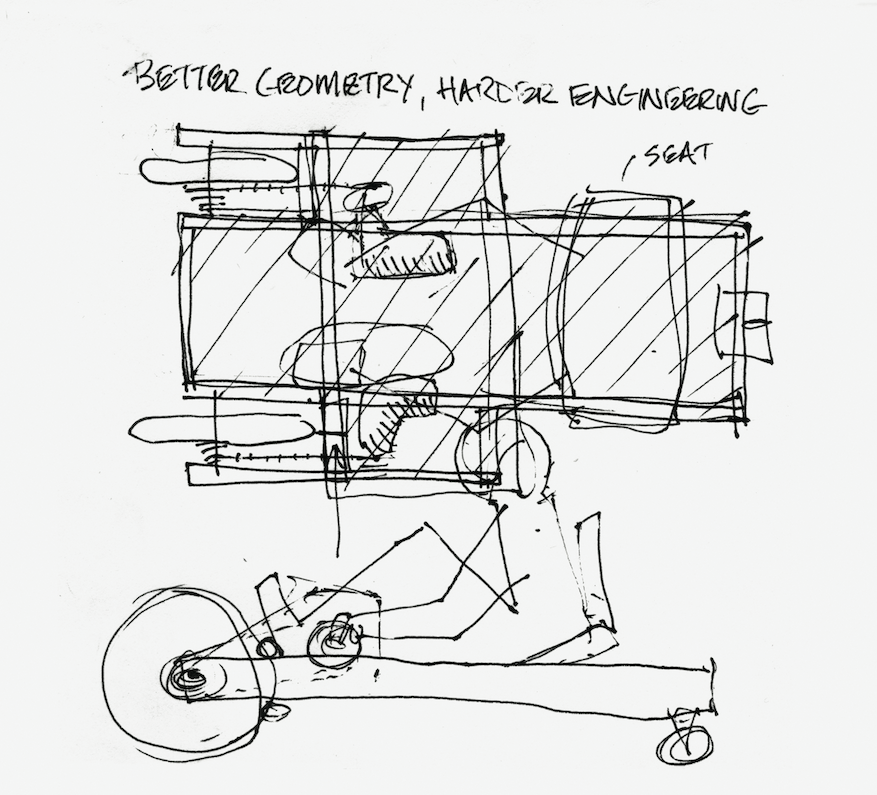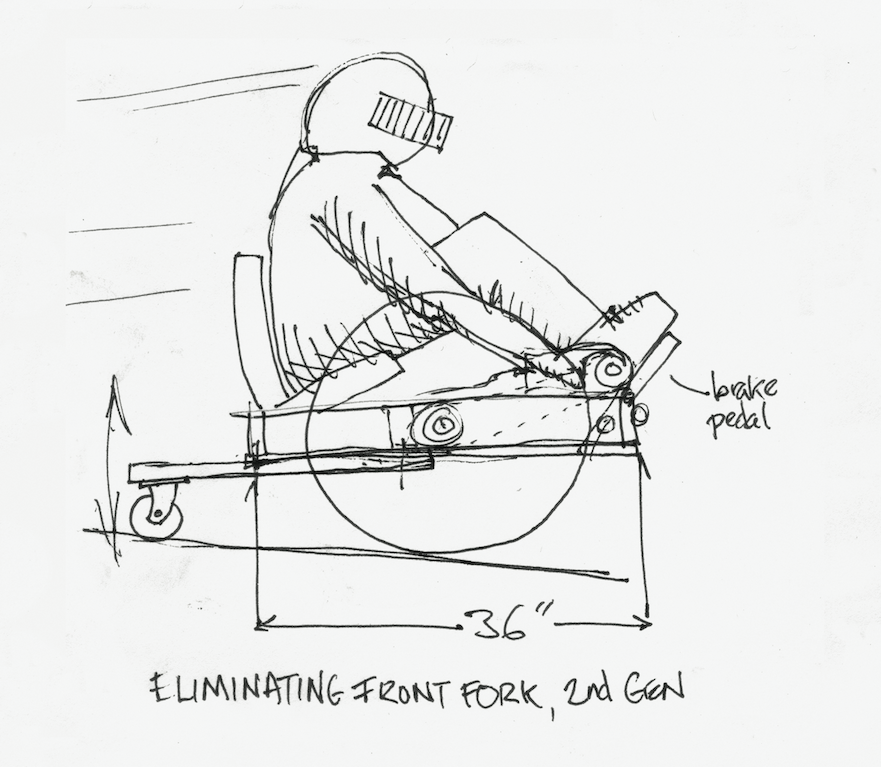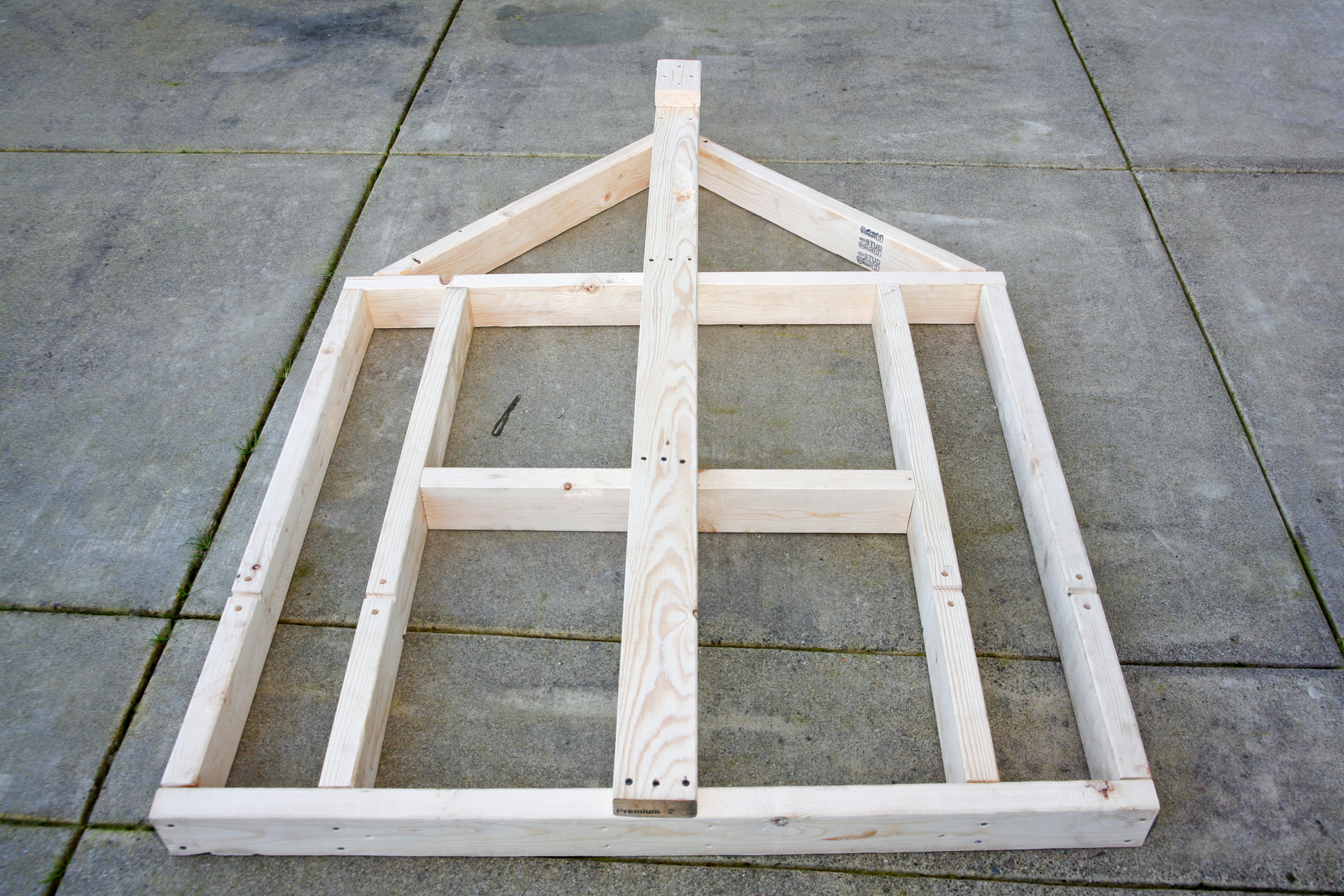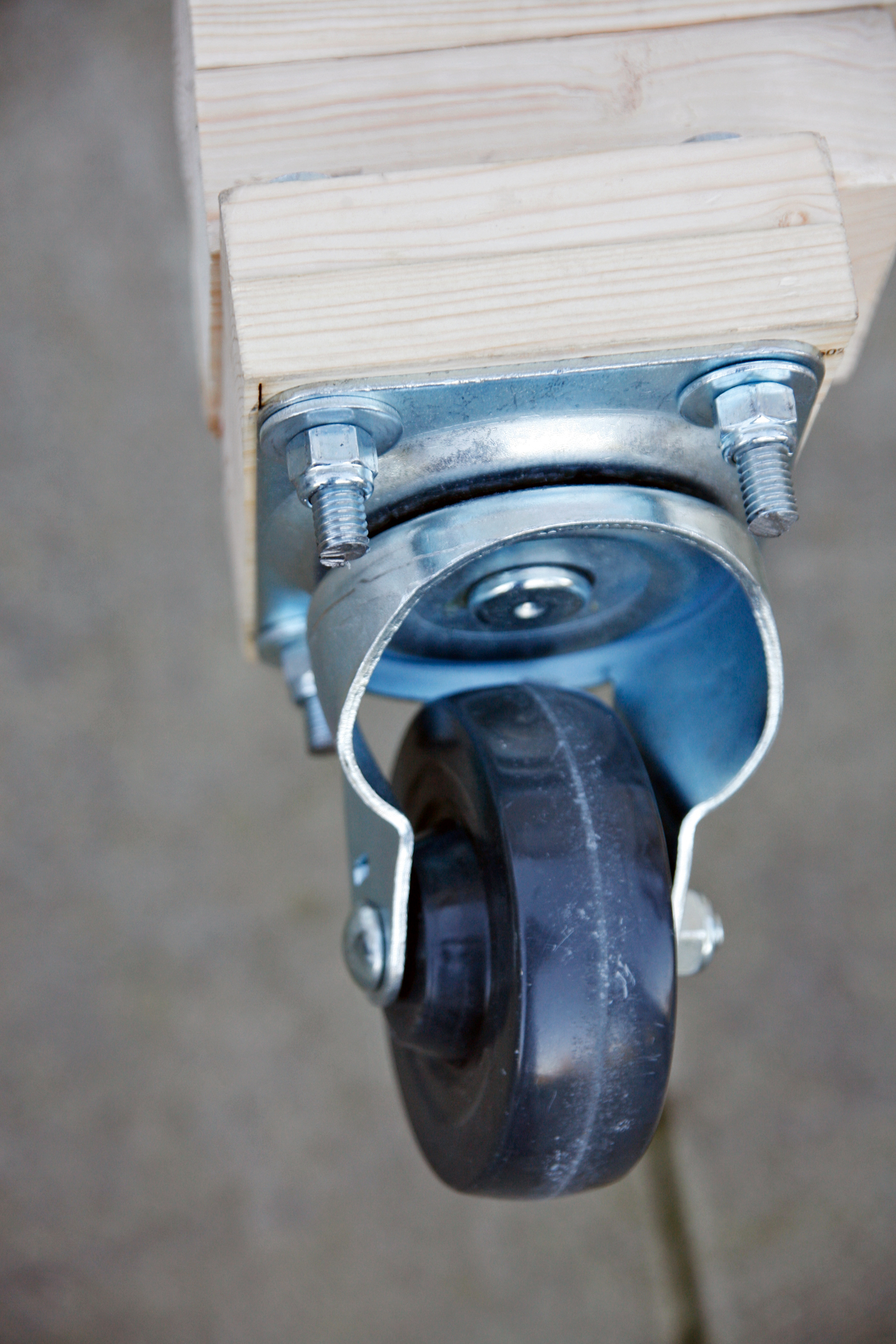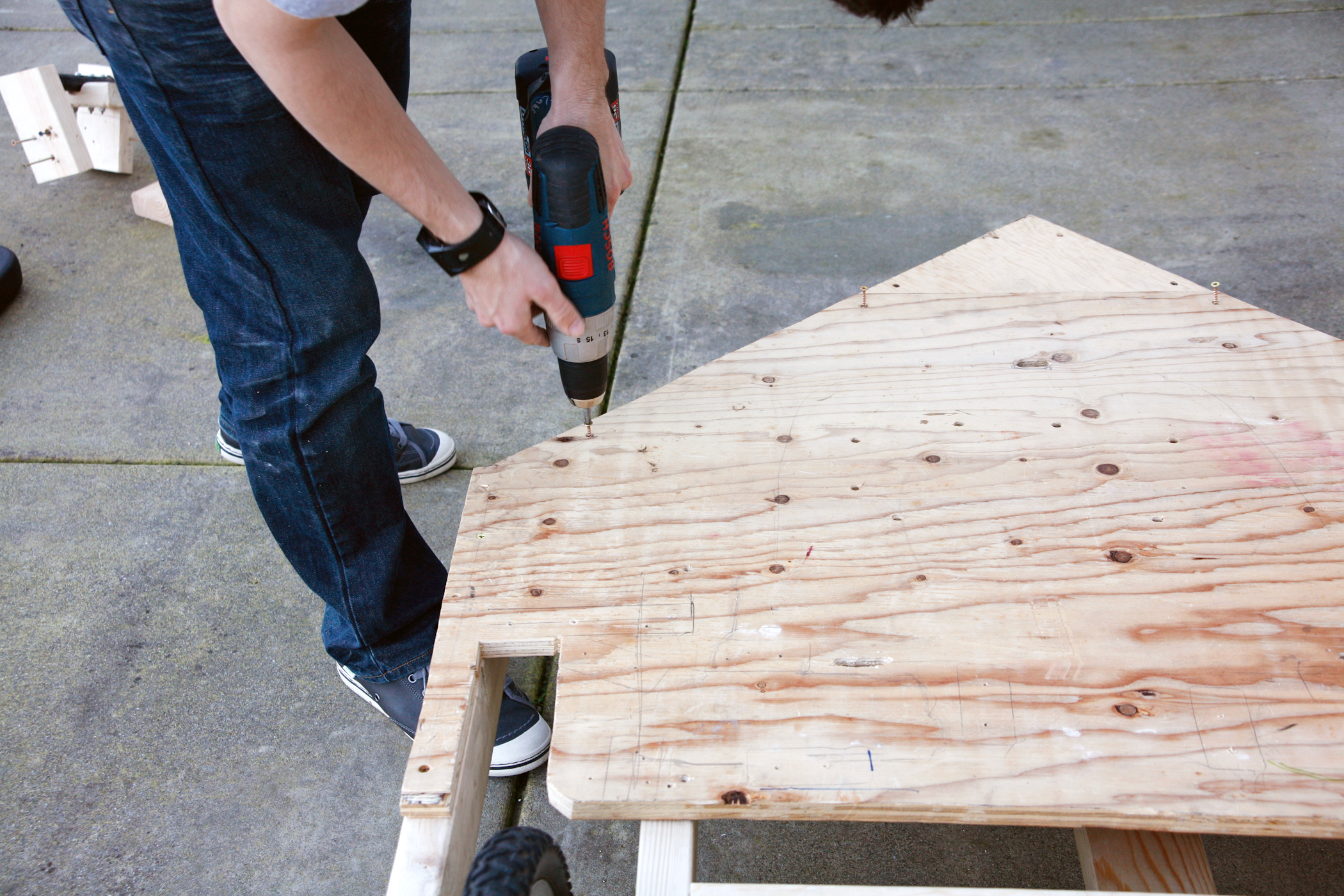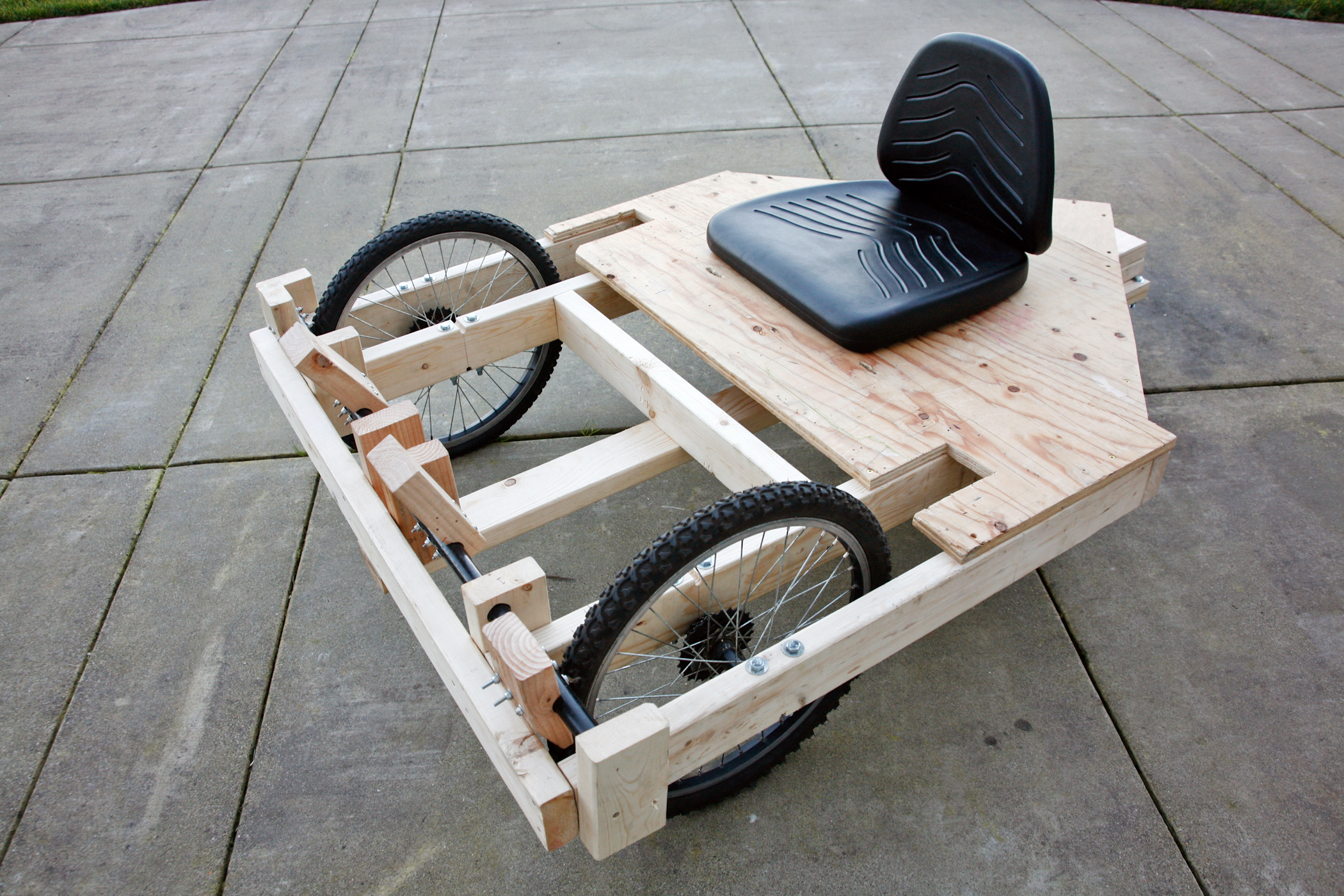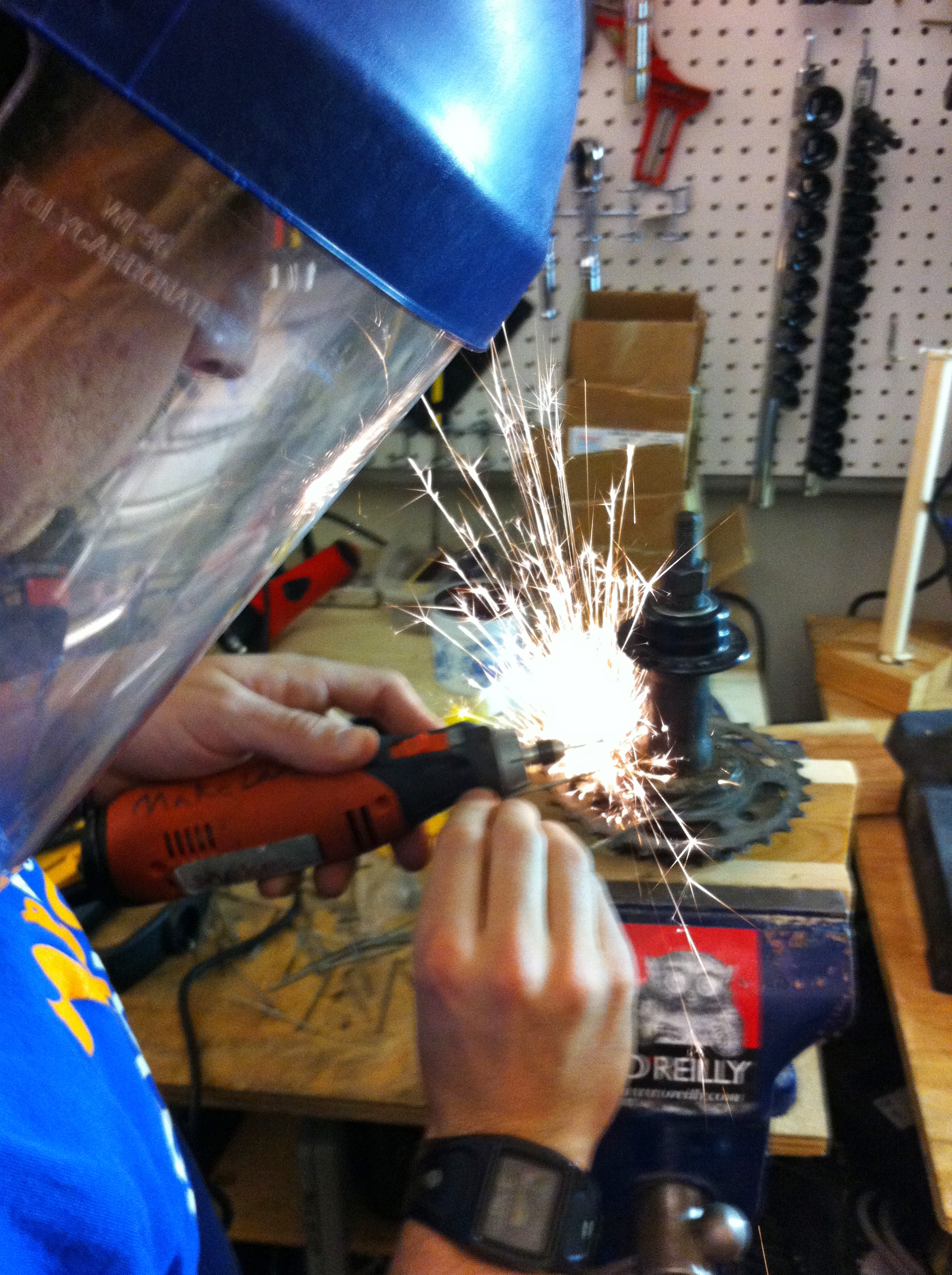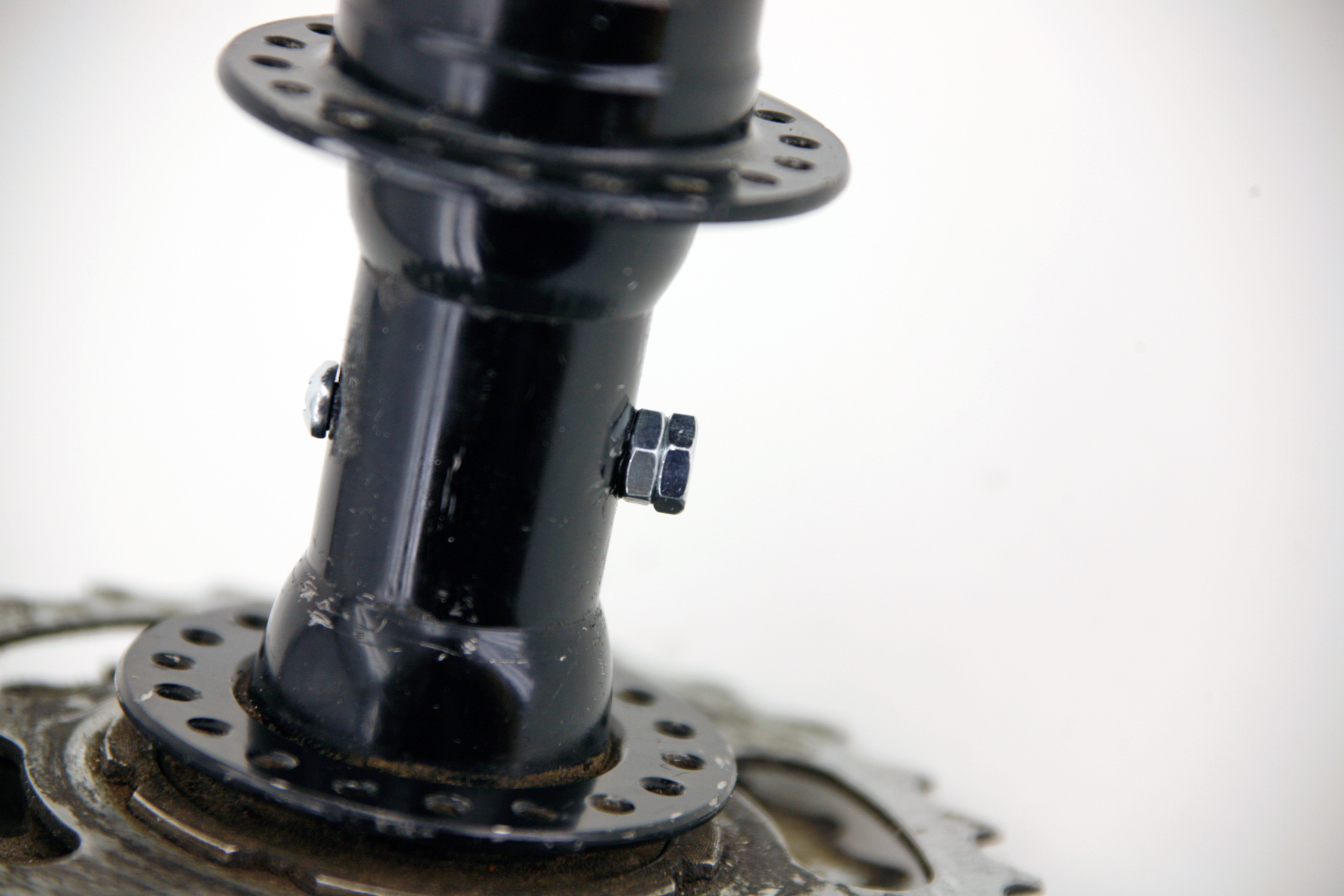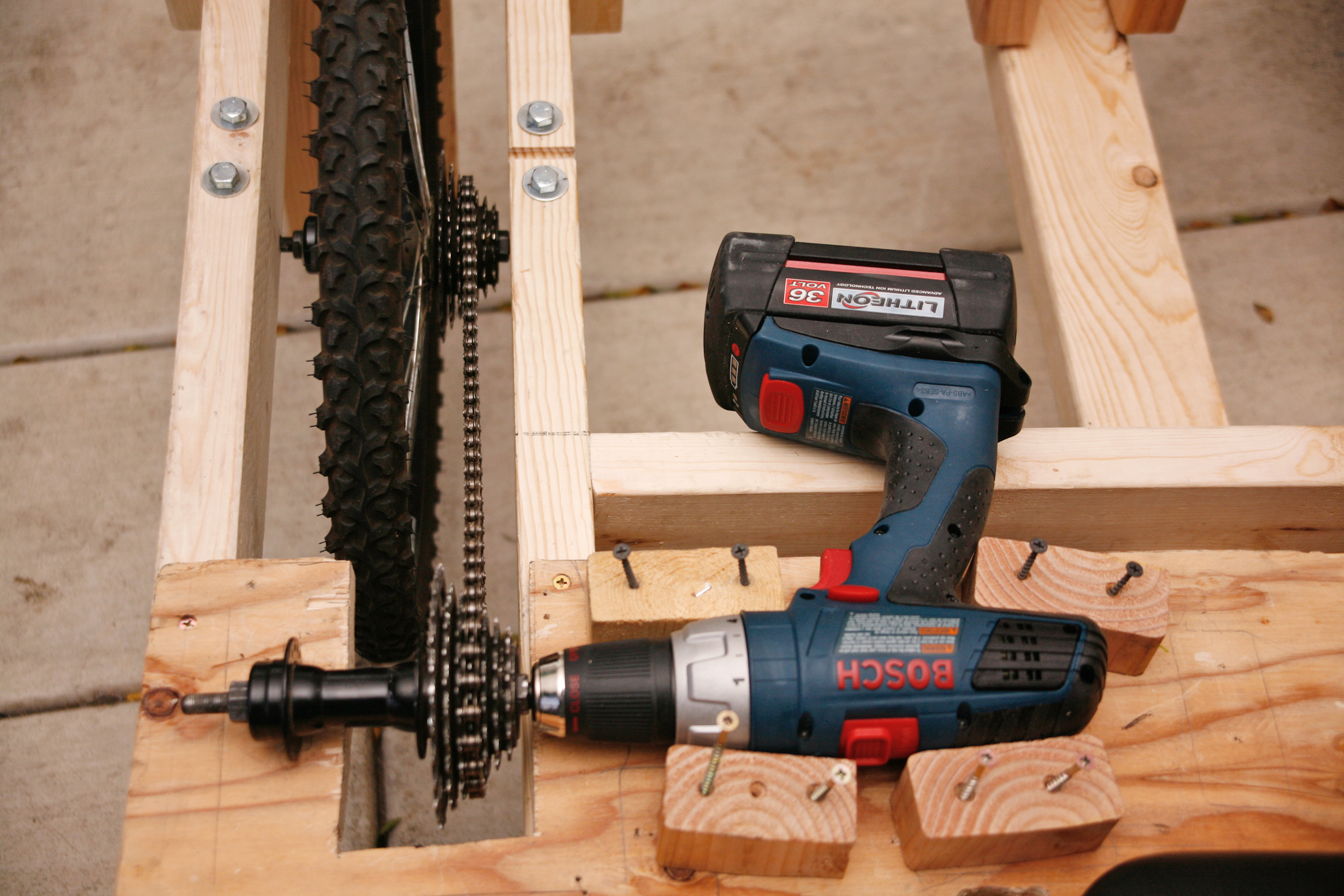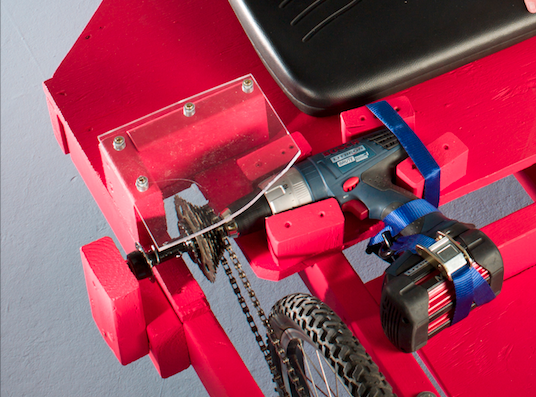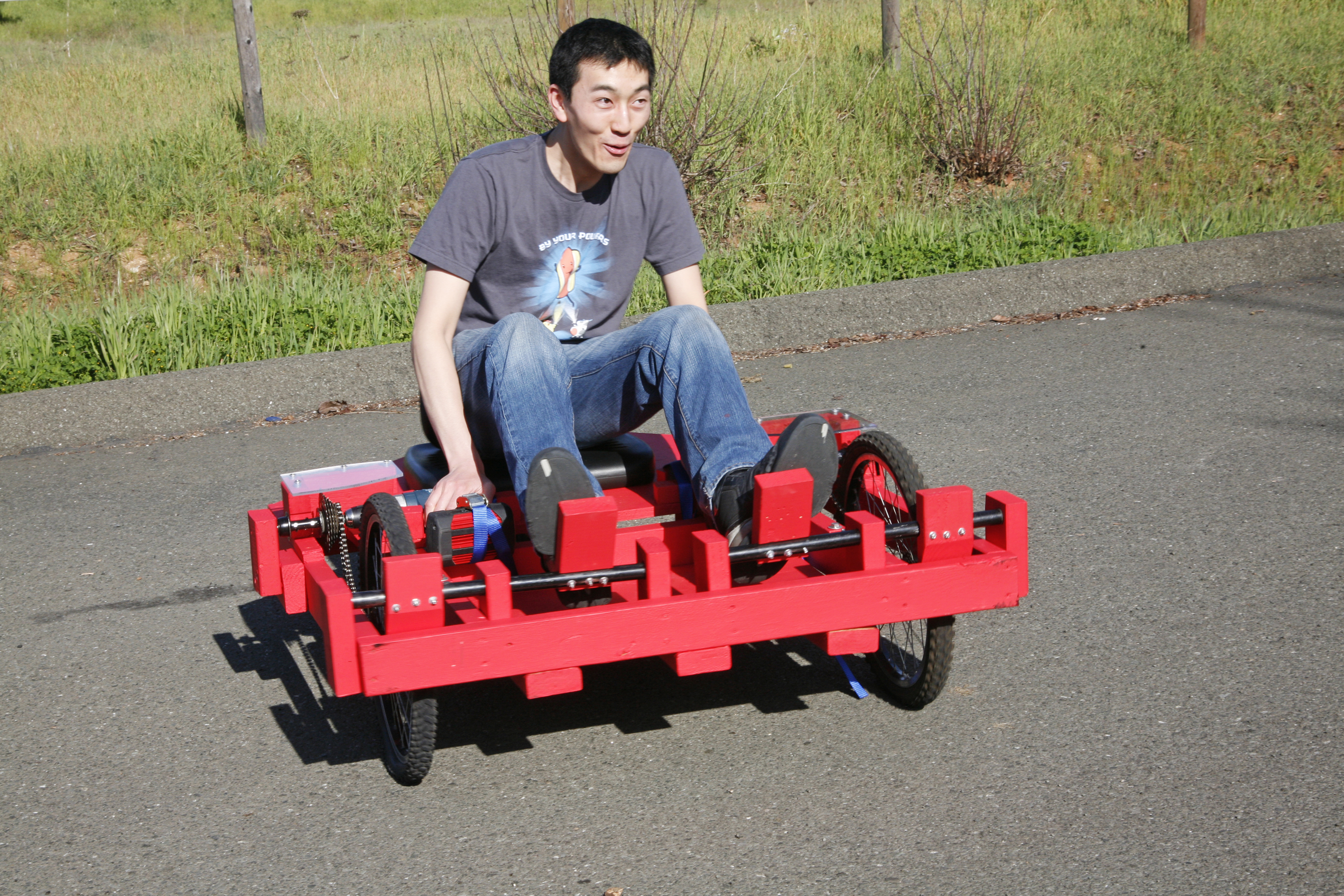Educator and Make: author Gever Tulley helps kids build their own drill-powered go-karts at his Tinkering School in Montara, Calif., using small welded frames, bike parts, and cheap corded drills. We asked him to build a version for Make:, but we wanted it to be large and powerful enough to carry an adult driver, and we wanted to go cordless.
Our kart would need a different geometry from the original kids’ karts to accommodate full-sized drivers. This meant changing the drive trains, the wheels, the seat — everything. And when Gever and his assistant Theo Gough arrived at Make: HQ toting buckets of bike parts and steel box beam for welding a frame, we knew it needed another change. There’s no welder here at Make: Labs, so we decided to build our kart out of lumber, not steel.
Together we conceived and built a new Drill Kart. We had a great time working through the design problems while we surmounted each challenge (metal frame to wooden frame, eliminating the front fork, moving the center of gravity), and we think we ended up with a good balance: functional, fun to drive, and easy to build.
We decided on a 3-wheel design with a heavy-duty caster in back and two 20″ bike wheels in front, powered via chain drive by two 36V cordless drills. This meant we’d need two more bike hubs chucked into the drills somehow to use as drive gears. Here’s how we did it.


